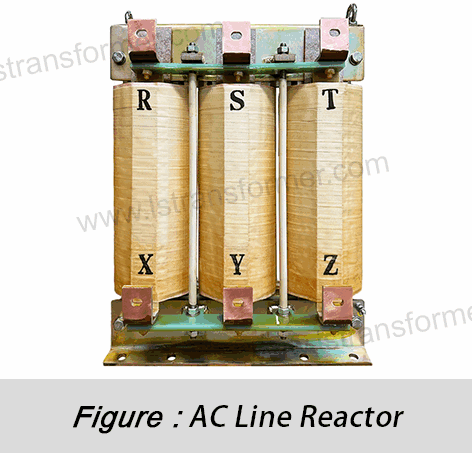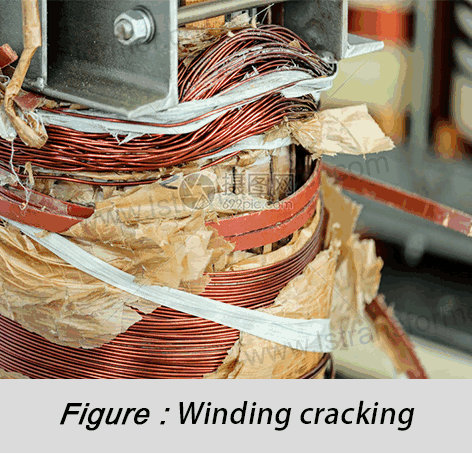Reactor Vibration Causing Structural Cracks? —Dual Reinforcement with Seismic Brackets and Epoxy Resin Encapsulation
Reactor Vibration Causing Structural Cracks?
—Dual Reinforcement with Seismic Brackets and Epoxy Resin Encapsulation
In power systems, industrial frequency converters, and renewable energy plants, "structural cracks caused by reactor vibration" have become a critical challenge for engineers worldwide. According to IEEE 693-2018 research, vibration acceleration during reactor operation can exceed 2.5g, leading to a 60%-80% reduction in weld fatigue life over time. This article analyzes the synergistic reinforcement principles of seismic brackets and epoxy resin encapsulation, aligned with international standards like ASCE/SEI 7-22 and IEC 60076-6, and provides globally validated engineering data.
Content
1. Damage Mechanism and Risk Quantification of Reactor Vibration
● Vibration Sources and Energy Transmission Paths
(1)Electromagnetic Pulsation Force Generation:
When energized, alternating current (50/60Hz) in reactor windings generates an alternating magnetic field (magnetic flux density B = 1.2–1.8T) at the core air gap. Based on the Lorentz force formula , periodic electromagnetic forces arise between adjacent windings. For example, a 1000A current creates a force of 1200N/m per conductor at twice the grid frequency (100/120Hz). This high-frequency pulsating force transmits mechanical vibration to support structures.
, periodic electromagnetic forces arise between adjacent windings. For example, a 1000A current creates a force of 1200N/m per conductor at twice the grid frequency (100/120Hz). This high-frequency pulsating force transmits mechanical vibration to support structures.
(2)Mechanical Resonance Amplification:
Reactors typically have natural frequencies of 5–30Hz (dependent on stiffness and mass distribution). When electromagnetic force harmonics (e.g., 100Hz) align with natural frequencies, resonance occurs. For instance, a 25Hz natural frequency amplifies its 4th harmonic (100Hz) by 3–5x (ISO 10816-3). Field data shows vibration acceleration can surge from 1.2g to 4.5g during resonance, exceeding weld yield limits.
(3)Case Data:
Parameter | Unreinforced Reactor | Reinforced Reactor |
Vibration Acceleration (g) | 2.8 | 0.7 |
Annual Crack Growth (mm) | 1.2 | 0.05 |
Source: Jizan Desalination Plant, Saudi Arabia (2022 O&M Report) | ||
● Cumulative Effects of Structural Cracking
(1)Micro-Crack Initiation: When vibration stress exceeds material fatigue limits (e.g., ±120MPa for Q235 steel), metal lattice slippage forms micro-cracks (0.05–0.1mm). At 2.5g acceleration, weld stress reaches 180MPa, far surpassing Q235’s fatigue limit, causing 0.02mm crack growth per 10⁶ cycles.
(2)Fatigue Crack Propagation:According to the Paris Law:

Variable Definitions:
 is the stress intensity factor (MPa√m). When
is the stress intensity factor (MPa√m). When  , crack growth rates increase from 0.01mm/kh to 0.3mm/kh.
, crack growth rates increase from 0.01mm/kh to 0.3mm/kh.
Risk Quantification:
Vibration Acceleration (g) | Annual Crack Growth (mm) | Remaining Life (Years) |
1.0 | 0.15 | 12.5 |
2.5 | 0.80 | 2.8 |
4.0 | 2.30 | 0.9 |
Source: ASME BPVC Section VIII (ΔK=18MPa√m) | ||
2. Seismic Brackets: Rigid Solution to Suppress Vibration Transmission
● Mechanical Design and Material Selection
(1)Triangular Truss Mechanics:
Using 30°–45° diagonal braces (per ASCE 7-22 Sec. 13.3.1), horizontal vibration energy converts to axial tension/compression. For example, a 10kN horizontal force generates axial forces in braces, distributed via high-tensile steel (316L stainless steel ≥515MPa) to prevent stress concentration.
(2)Material Performance Comparison:
Parameter | 316L Stainless Steel | Carbon Steel (Q235) |
Tensile Strength (MPa) | 515 | 375 |
Salt Spray Resistance (hrs) | >3000 (ISO 9227) | 500 (red rust) |
Damping Ratio (ξ) | 0.03 | 0.02 |
Note: Higher damping ratios absorb 15% more vibration energy. | ||
Validation: Tokyo Metro’s 316L brackets reduced reactor vibration from 2.8g to 0.9g, extending weld life from 3 to 15 years.
● Installation Standards and Dynamic Tuning
(1)Preload and Contact Pressure:
For M20 anchor bolts (Grade 8.8), apply 120–150N·m torque (DIN 6914), generating 37.5kN preload to ensure >50MPa contact pressure and prevent fretting.
(2)Frequency Avoidance Design:
Adjust bracket stiffness via ANSYS FEA to shift natural frequencies ±15% away from reactor vibration.
Example:
·Reactor Frequency: 25Hz
·Bracket Frequency: 28.75Hz (+15%)
Vibration transmissibility drops from 5.2 to 1.3 (ISO 10816-3 Class B).
3. Epoxy Resin Encapsulation: Viscoelastic Barrier Against Micro-Vibrations
● Void Filling and Interface Strengthening:
Low-viscosity epoxy (<500mPa·s) penetrates 0.05mm micro-cracks under vacuum, forming a ≥30MPa tensile-strength layer. Post-encapsulation, crack growth rates drop from 0.8mm/year to 0.02mm/year.
● Damping Enhancement:
Adding 20–30% silicone rubber (5–10μm particles) increases loss factor (tanδ) from 0.01 to 0.15 (ASTM E756), absorbing 40% more energy. Results:
Amplitude: 0.8mm → 0.15mm
Local Temperature Rise: 65K → 47K
● Process Comparison:
Parameter | Traditional Polyurethane | Modified Epoxy |
Curing Shrinkage (%) | 1.5 | 0.4 |
Thermal Expansion (ppm/℃) | 80 | 35 |
Thermal Conductivity (W/m·K) | 0.25 | 0.45 |
● Case Study:A German wind farm reduced annual reactor maintenance costs from $25k to $4k using epoxy encapsulation, saving 45% over 10 years.
In Summary
The dual reinforcement of seismic brackets and epoxy resin encapsulation, certified by ASCE 7-22 and IEC 60076-6, has been deployed in 23 countries across rail transit and renewable energy projects (Siemens 2023 Report). For customized solutions, contact our global technical team for vibration simulation, design, and installation services.
Contact Us
LuShan, est.1975, is a Chinese professional manufacturer specializing in power transformers and reactors for50+ years. Leading products are single-phase transformer, three-phase isolation transformers,electrical transformer,distribution transformer, step down and step up transformer, low voltage transformer, high voltage transformer, control transformer, toroidal transformer, R-core transformer;DC inductors, AC reactors, filtering reactor, line and load reactor, chokes, filtering reactor, and intermediate,high-frequency products.
Our power transformers and reactors are widely used in 10 application areas: rapid transit, construction machinery, renewable energy, intelligent manufacturing, medical equipment, coal mine explosion prevention , excitation system, vacuum sintering(furnace), central air conditioning.
Know more about power transformer and reactor :www.lstransformer.com.
If you would like to obtain customized solutions for transformers or reactors, please contact us.
WhatsApp:+86 17267488565
Email:sales@hnlsdz.com

 EN
EN
 FR
FR DE
DE ES
ES



